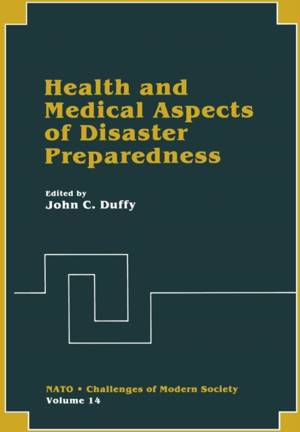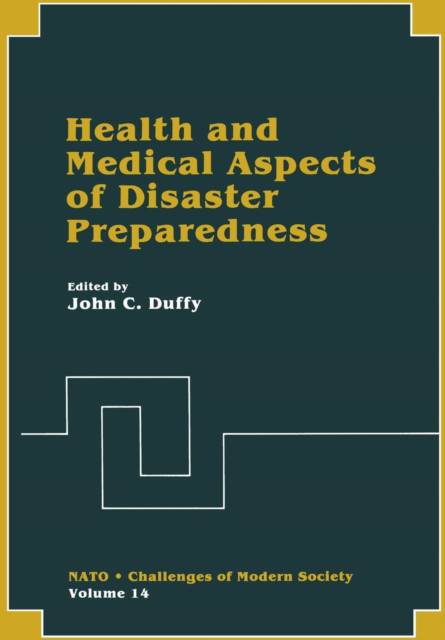
- Afhalen na 1 uur in een winkel met voorraad
- Gratis thuislevering in België vanaf € 30
- Ruim aanbod met 7 miljoen producten
- Afhalen na 1 uur in een winkel met voorraad
- Gratis thuislevering in België vanaf € 30
- Ruim aanbod met 7 miljoen producten
Zoeken
Health and Medical Aspects of Disaster Preparedness
€ 76,95
+ 153 punten
Omschrijving
The study of Health and Medical Aspects of Disaster Preparedness was approved by NATO/CCMS in 1985 with the first pilot study meeting in June of that year. The pilot study, under the leadership of the United States and Belgium, focused on the current status of disaster preparedness in partici- pating nations. An objective look was taken at the availability or resources to cope with disasters from an international standpoint. The types of disaster settings that were reviewed in the study included the following: (1) Earthquakes, floods, hurricanes, avalanches (2) Nuclear power plant accidents or spills (3) Water and aircraft accidents (4) Building fires, building collapses (5) Contamination by hazardous chemicals or biological waste (6) Civil disturbances A disaster can strike anywhere at any time. Some nations and local communities have well-developed disaster plans with which to meet catastrophic situations. The fact is that most communities are without written and coordinated disaster plans which offer their citizens the most effective and comprehensive protection in these unexpected and often critical situations. Disaster has been defined as a sudden event which involves large numbers of people and results in loss of life, serious injury and property loss. together with a severe disruption of community organization and services. In the United States, thousands of people are killed and injured in disasters every year. Thus, disasters constitute a serious problem in both individual and public health terms in this country alone. Disasters can be classified as natural and man-made.
Specificaties
Betrokkenen
- Uitgeverij:
Inhoud
- Aantal bladzijden:
- 200
- Taal:
- Engels
- Reeks:
- Reeksnummer:
- nr. 14
Eigenschappen
- Productcode (EAN):
- 9781461278801
- Verschijningsdatum:
- 4/10/2011
- Uitvoering:
- Paperback
- Formaat:
- Trade paperback (VS)
- Afmetingen:
- 170 mm x 244 mm
- Gewicht:
- 326 g

Alleen bij Standaard Boekhandel
+ 153 punten op je klantenkaart van Standaard Boekhandel
Beoordelingen
We publiceren alleen reviews die voldoen aan de voorwaarden voor reviews. Bekijk onze voorwaarden voor reviews.






